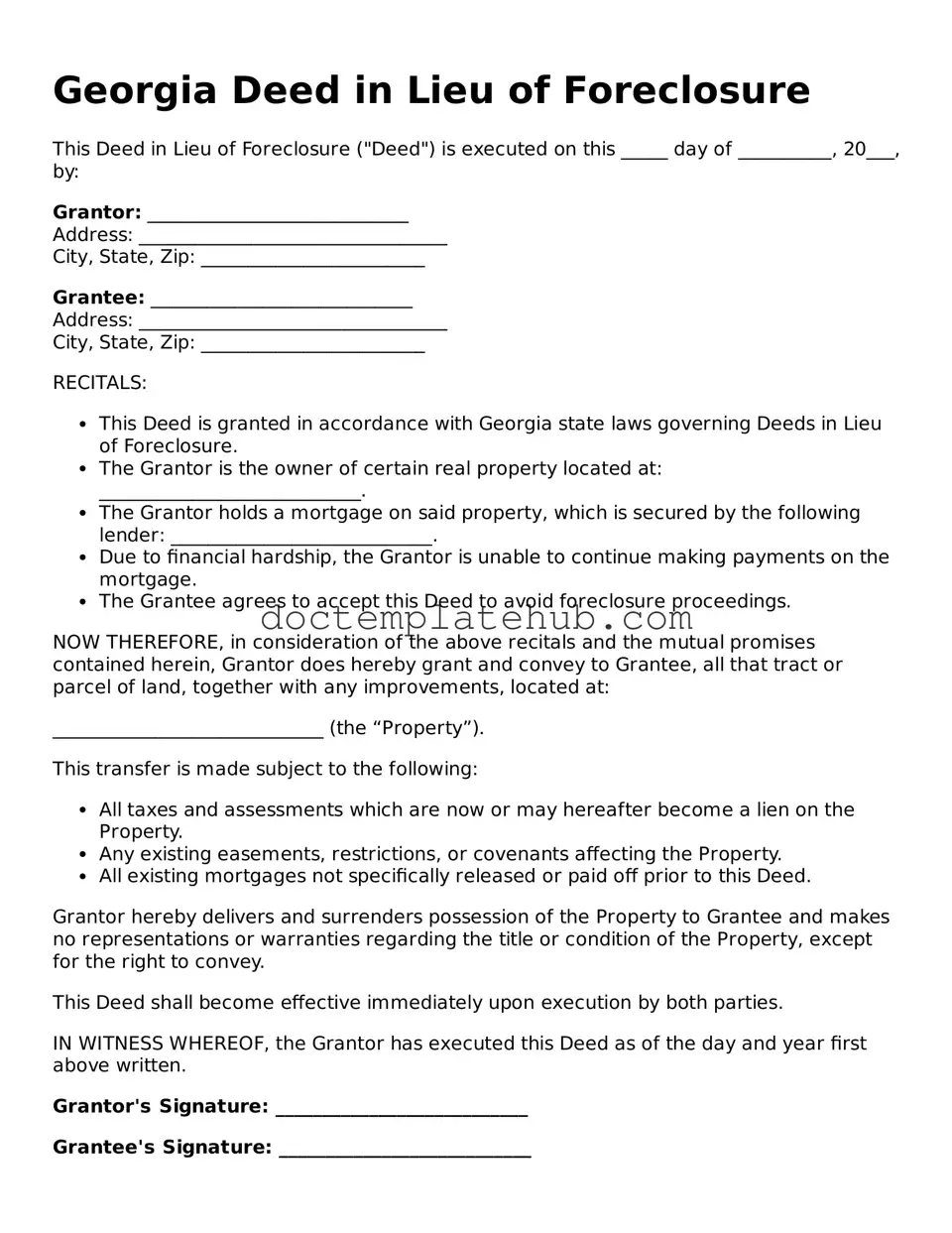What is a Deed in Lieu of Foreclosure in Georgia?
A Deed in Lieu of Foreclosure is an agreement between a homeowner and a lender. In this arrangement, the homeowner voluntarily transfers ownership of the property to the lender to avoid foreclosure. This process can help both parties by simplifying the transition and potentially reducing costs associated with foreclosure proceedings.
What are the benefits of a Deed in Lieu of Foreclosure?
One significant benefit is that it allows homeowners to avoid the lengthy and stressful foreclosure process. It can also help protect your credit score compared to a foreclosure. Additionally, it may provide the lender with a quicker way to recover the property, which can be advantageous for both sides.
Who is eligible for a Deed in Lieu of Foreclosure?
Eligibility typically depends on the lender's policies. Generally, homeowners facing financial difficulties and unable to keep up with mortgage payments may qualify. However, the property must be free of other liens, and the homeowner must demonstrate that they have exhausted other options, like loan modifications or short sales.
How does the process work?
The process begins with the homeowner contacting the lender to express interest in a Deed in Lieu of Foreclosure. The lender will then review the homeowner's financial situation and the property's status. If approved, the homeowner will sign the necessary documents to transfer ownership. After the transfer, the lender will typically forgive any remaining mortgage debt.
Are there any risks involved?
Yes, there are some risks. While a Deed in Lieu can be less damaging to your credit than foreclosure, it can still impact your credit score. Additionally, if the lender forgives a significant amount of debt, it may result in tax implications for the homeowner. Consulting a tax professional is wise to understand potential consequences.
Can I change my mind after signing the Deed in Lieu?
Once the Deed in Lieu of Foreclosure is signed and recorded, it generally cannot be undone. It’s crucial to ensure that this is the right decision for your situation before proceeding. Take the time to weigh your options and seek professional advice if needed.
What happens to my mortgage after the Deed in Lieu is executed?
After the Deed in Lieu is executed, the mortgage is considered satisfied, and the lender typically releases the homeowner from any further obligations on the loan. However, it's essential to get written confirmation of this from the lender to avoid any future misunderstandings.
Will I receive any cash or compensation for the Deed in Lieu?
In most cases, homeowners do not receive cash or compensation when executing a Deed in Lieu of Foreclosure. The primary purpose of this arrangement is to relieve the homeowner of their mortgage obligation. However, some lenders may offer relocation assistance or other incentives, so it’s worth discussing this with your lender.
How can I find legal assistance for a Deed in Lieu of Foreclosure?
Finding legal assistance is important to navigate the complexities of a Deed in Lieu of Foreclosure. You can start by contacting local legal aid organizations, real estate attorneys, or housing counselors. They can provide guidance tailored to your specific situation and help ensure that your rights are protected throughout the process.
